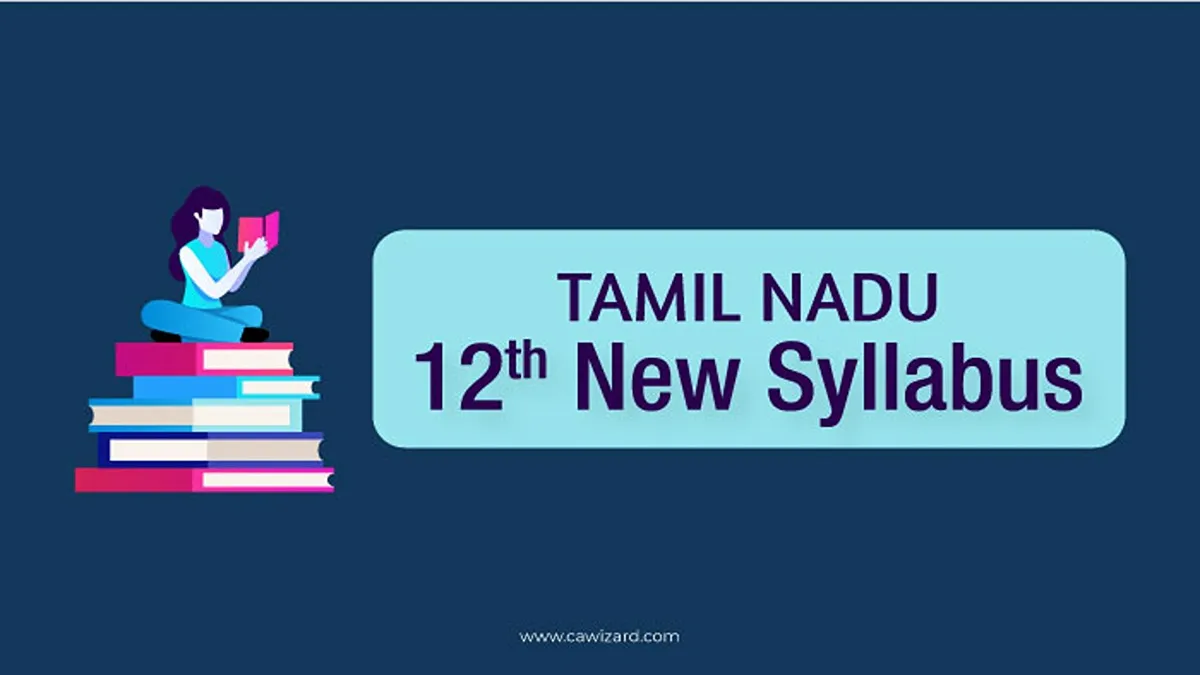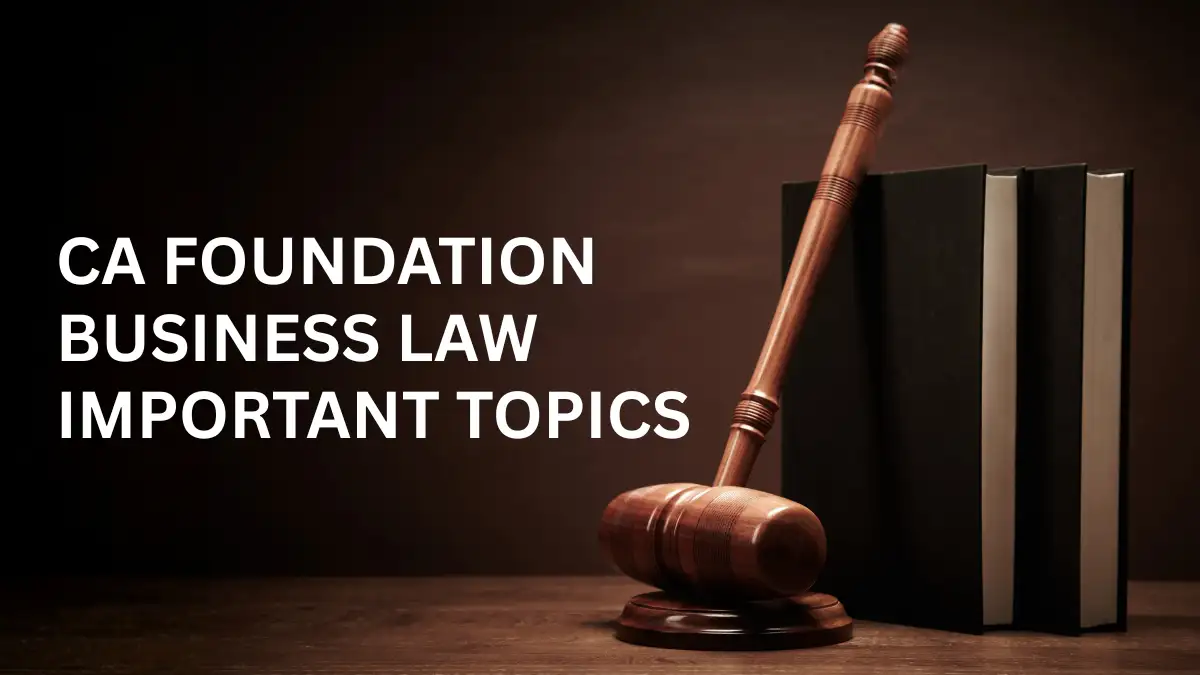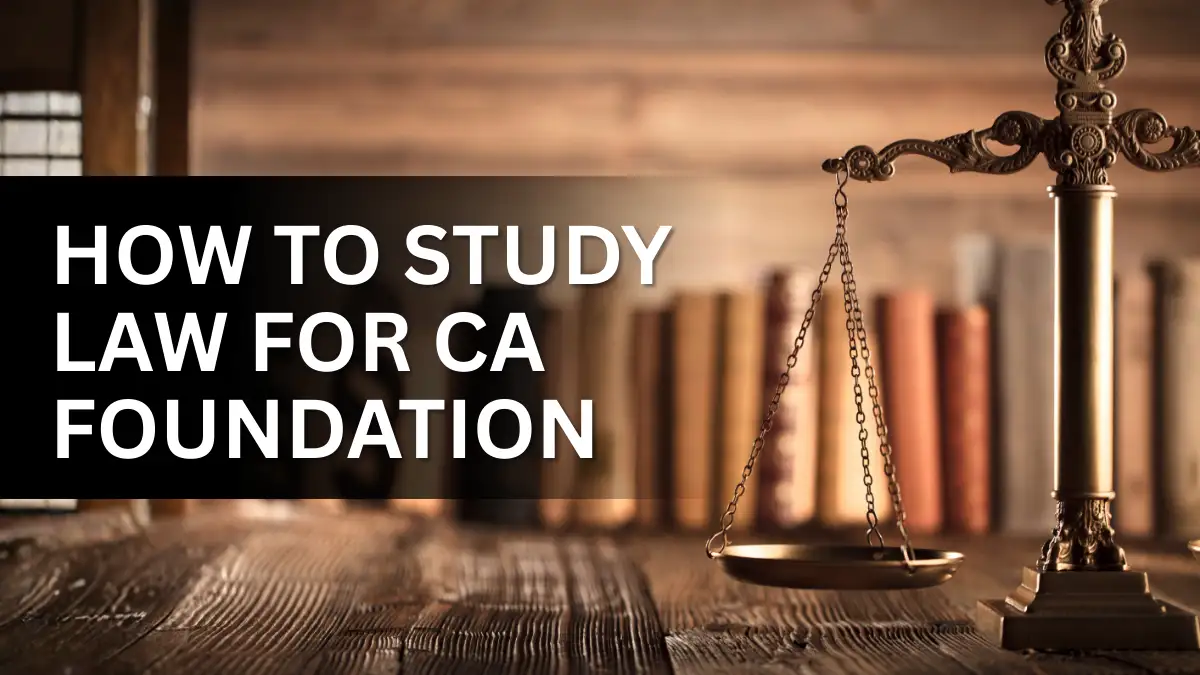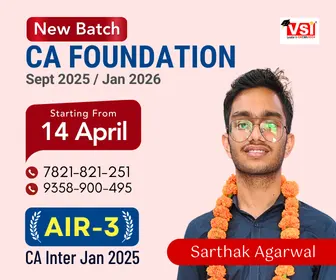If you are looking for the updated Tamil Nadu 12th Syllabus, you are on the right page. This article will get complete information about the new syllabus and subject of the Tamil Nadu 12th class. This article is updated as per the Government syllabus guidelines. I will talk on one more topic for students that helps them for their career growth by giving them the path to choose a career opportunity after 12th.
Generally, commerce students choose CA (Chartered Accountancy) after the 12th examination. There is also an opportunity for Science stream students to choose CA as a future and the excellent point is anybody can select CA as a career. Chartered Accountancy is one of the reputed professional jobs that students can become by giving their full dedication to the course.
Let’s talk about the article so students can get the subject’s details, chapter-wise details, syllabus, etc.
TN State Board 12th Syllabus 2023-24
The state board of Tamil Nadu conducts the public examinations for the students every year. Board Directorate of Tamil Nadu Government makes updates every year in the TN HSC syllabus for students. Candidates appearing for TN HSC class 12th exam 2023-24 should be aware of the new Tamil Nadu HSC syllabus; this will help students know the exam’s updated question pattern. Students appearing for the Tamil Nadu 12th exam must go through every topic of the latest syllabus.
Tamil Nadu 12th HSC Syllabus– English
| Chapters | Topics |
|---|---|
| Vocabulary competencies | Meaning, syllabification, spellings, word formation, vocabulary improvement, phrasal verbs, and idioms, foreign words, and phrases. |
| Grammatical competencies | Sentence patterns, conditional and concessional clauses, modal auxiliaries, reported speech, relative clauses, sentence transformation, and passivization. |
| Listening Competencies | Comprehension passage containing six-eight lines, short passages, ease of breath, CNN news panel discussion, coherence. |
| Reading competences | Descriptive, argumentative, factual, and literary texts. |
| Writing competencies | Scientific and factual discourse, interesting texts, reports, relevant situations, non-verbal information, projects, advertisements, et cetera. |
| Study skills | Dictionaries, library facilities, internet, verbal and non-verbal texts, lectures, books and journals, essays of students, email language. |
| Occupational | Report writing, presenting messages, picture composition, presenting facts and figures in a systematic method, advertisements, etc. |
| Strategic competencies | Samples of pupil language, areas of doubt, hesitation, etc. |
| Creative competencies | Essay writing, poem writing, critical appraisal, scriptwriting for interviews, cartoon scripts, travelogues, captions for photographs, translation. |
| Speaking competencies | Introduction to topics through group discussions, greeting, introducing, giving information, disagreeing peacefully, projecting one’s image, expressing gratitude, welcome address, vote of thanks, etc. |
Tamil Nadu 12th Syllabus 2023-24 – Mathematic
| Chapters | Topics |
|---|---|
| Systems of equations | Systems of linear equations, methods of solution |
| Application of matrices | Matrices for transformations: Matrices for Translation, Reflection, Rotation, Glide reflection, Shear and Stretch, Isometry, and similarity matrices. |
| Analytical geometry | Definition of a conic, Derivation of the standard equation of Parabola, Ellipse, Hyperbola and Rectangular Hyperbola, Chords, Tangents & Normals, etc. |
| Vector algebra | Vectors and Scalars Representations of vectors and operations of addition and subtraction, Scalar and vector products, Triple products, products 4 vectors, etc. |
| Application of differentiation | Derivative as a rate measurer, Derivative as a measure of slope, Mean Value Theorems, Curve tracing, et cetera. |
| Application of integration | Definite integral and its applications |
| Differential equations | Formation of differential equations, I order and II Order Linear Equations, Applications. |
| Probability distribution | Random variable, probability functions, mathematical expectation, discrete and continuous distribution. |
| Complex number | Complex Algebra Fundamental operations on complex numbers, Applications. |
| Algebraic structures | Rings. Integral Domains and Fields, Group Structure. |
TN Board 12th HSC Syllabus – Physics
| Chapters | Topics |
|---|---|
| Current electricity | Electric Current, drift velocity, Ohm’s law, Electrical resistivity, superconductivity, Combination of resistors, Electric power, etc. |
| Effects of electric current | Healing effect, Joule’s law, magnetic effect of electric current, Magnetic dipole moment of a revolving electron, Conversion to ammeter and voltmeter, Bar magnet as an equivalent solenoid, etc. |
| Electromagnetic (EI) induction and alternating current (AC) | (EI),(AC), Eddy current, AC generator, methods of inducing emf, self-induction. |
| Electromagnetic waves and wave optics | Electromagnetic waves and their characteristics, Transverse nature of electromagnetic waves, Emission and Absorption spectrum, Theories of light, Wavefront and Huygens principle, etc. |
| Atomic physics | Atomic structure, Bohr’s model, Sommerfield’s atom model, Quantum numbers, x -rays production properties, detection, absorption, diffraction of x – rays, etc. |
| Dual nature of radiation and matter | The photo-electric effect, Photocells and their application, Matter waves, electron microscope. |
| Nuclear physics | Nuclear properties, Nuclear mass defect, Nature of Nuclear forces, Neutron discovery, Radioactivity, Nuclear fission. |
| Relativity | Concept of space, time and mass, Frame of reference, Newtonian relativity, Special theory of relativity, Doppler effect of light, |
| Semiconductor devices and their applications | Semiconductor theory, Semiconductor doping, Formation of P-N Junction, Diode as a rectifier, Junction – transistors, Measuring Instruments, etc. |
| Communication systems | Modes of propagation ground wave, Amplitude modulation, Antennas, and Transmission lines, TV.Transmission and reception, Video signal analysis, etc. |
Tamil Nadu 12th Latest Syllabus 2023-24 – Chemistry
| Chapters | Topics |
|---|---|
| Inorganic chemistry | Atomic Structure II, Periodic Table, Coordination compounds & bio coordination compounds, Nuclear Chemistry, etc. |
| Physical chemistry | Solid State, Thermodynamics, Chemical Equilibrium, Chemical Kinetics, Surface Chemistry, Electro Chemistry, Electro Chemistry II, etc. |
| Organic chemistry | Isomerism in Organic Chemistry, Hydroxy derivatives, Ethers, Carbonyl Compounds, Carboxylic acid, Organic Nitrogen Compounds, Biomolecules, Chemistry in Action, Problems in Chemistry. |
Class 12th Tamil Nadu Syllabus– Biology
- Bio- Botany
| Chapters | Topics |
|---|---|
| Reproduction in plants |
|
| Genetics and molecular biology |
|
| Plant biotechnology |
|
| Plant ecology |
|
| Economic botany |
|
- Bio- Zoology
| Chapters | Topics |
|---|---|
| Reproduction |
|
| Genetics and evolution | PRINCIPLES OF INHERITANCE AND VARIATION – Multiple alleles – Human Blood Groups – ABO Blood groups inheritance – Genetic control of Rh factor – Erythroblastosis foetalis – Sex determination – Autosome, Allosome – Sex determination in Humans – Sex Linked Inheritance – Barr bodies{x-inactivation} – X-linked inheritance – Haemophilia – Colour blindness – Y-linked- Hypertrichosis – Karyotyping – Pedigree analysis – Mendelian Disorders – Chromosomal abnormalities – Down’s syndrome – Klinefelter’s Syndrome – Turner’s Syndrome MOLECULAR GENETICS – Nucleic Acids – DNA – Structure of Polynucleotide chain – Packing of DNA Helix – The search for genetic material – DNA is a genetic material – Hershey and Chase Experiment – Properties of Genetic materials – RNA world – Types of RNA – Role of RNA – Replication – Enzymes for DNA replication – Mechanism of Replication – experimental proof of DNA replication(Meselson and Stahl’s Experiment) – Transcription – Transcription unit – Transcription unit and gene, etc. |
| Biology and human welfare |
|
| Animal biotechnology and its application | Principles of Biotechnology – applications in Medicine – Human insulin – Human growth hormones – Human blood clotting factors in treating hemophilia – Interferons –Vaccines – Gene therapy – Molecular diagnosis – ELISA (Enzyme-Linked Immune- Sorbent Assay) – PCR (Polymerase Chain Reaction ) – Stem Cell therapy – Bone Marrow Therapy Stem Cell Banks – Animal cloning: Dolly – Transgenic Animals & Biological products (Rosie- cow) and their uses – Ethical issues |
| Ecology, environment, and conservation | ORGANISM AND POPULATION – Concept of Ecology – Environment – habitat & Niche – Concept of Biome & distribution – Major abiotic factors, water, light, temperature & soil – Responses to abiotic factors – Population and ecological Adaptations – Interactions – Commensalism mutualism, competition, predation & parasitism – Population attributes – growth, birth rate & death rate, age distribution – Population growth curve population regulations BIODIVERSITY AND ITS CONSERVATION – Biodiversity – concepts of biodiversity – levels of Biodiversity – Patterns of Biodiversity – Biogeographical regions of India – Biotic provinces of Tamil Nadu
Importance of biodiversity – global /India – Loss of biodiversity – Threats to biodiversity – Biodiversity conservation(Insitu, Ex Situ conservation) – IUCN – Hotspots / Endangered organisms – extinction, red data book – Causes of biodiversity losses ENVIRONMENTAL ISSUES – Air pollution and its control – Water pollution and its control – Noise pollution – Agrochemicals and their effects – biomagnifications – Eutrophication – Organic farming & its implementation – Solid waste management / radioactive waste management – greenhouse effect & global warming – ozone depletion – deforestation – E-waste – Remedy of plastic waste – Eco- San toilets – People’s participation in conservation of forest. |
Syllabus of Tamil Nadu 12th 2023-24 – Accountancy
| Chapters | Topics |
|---|---|
| Accounts from incomplete records- I |
|
| Accounts of non-profit organizations |
|
| Partnership accounts- basic concepts |
|
| Treatment of goodwill in partnership accounts |
|
| Partnership- admission |
|
| Partnership accounts- retirements |
|
| Partnership accounts-death of a partner |
|
| Company accounts- I |
|
| Financial statement analysis- I | Financial Statements: Meaning and Features; Significance & Limitations; Format of company final accounts as per companies act, 2013; Tools of financial statement analysis: Common size statement, Comparative statement, Trend Analysis, Funds Flow Statement, Cash Flow Statement |
| Financial statement analysis- II | Common Size Financial Statements; Comparative Financial Statements; Trend Analysis |
| Financial statement analysis- III |
|
| Computer application in accounting- I |
|
| Computer application in accounting- II | Application of Computerised account system- “Tally with GST package”; Practical on Application of accounting software- Creation of Company, Accounts group, etc. and generation of reports |
TN Board 12th Syllabus 2023-24 – Business Studies
| Chapters | Topics |
|---|---|
| Organization | Meaning and Types of Organization |
| Sole trader | Meaning of sole trader, Special features of a sole trader, Merits of a sole trader, Demerits of a sole trader. |
| partnership | Definition of partnership, Special features of partnership, Similarities between sole trader and partnership, Merits and Demerits of Partnership, Types of Partnership, Kinds of Partners, Rights and Duties of partners, Partner’s express and Implied authority, Partnership Deed, Dissolution of partnership, etc. |
| Companies I and II | Definitions, Differences between partnership and company, Kinds of companies, a public company, a private company, Privileges of a private company, Differences between a private company and public company, Formation of a company, Memorandum of Association, Articles of Association, Prospectus, Shares, Allotment of shares, DebenturesTypes, Differences between Shares and Debentures. |
| Stock exchange | Introduction, Procedures regarding new Issues, Stock Exchange, Investors and speculatorsDifferences, SEBI, Mutual funds, Bombay Online Trading (BOLT). |
| Co-operatives | Definition, Merits, and Demerits, Types of Co-operatives, Differences between companies and Co-operatives. |
| Government in business | Introduction, Types, Public Corporation, Government Companies, Differences between the private and public sectors. |
Class 12th Tamil Nadu HSC Syllabus 2023-24 – Economics
| Chapters | Topics |
|---|---|
| Economic growth and economic development | Meaning and Differences between Growth and development; Conceptualization of Economic Growth;Characteristics of Developing and Developed Economy; Leibenstein’s model of Economic Characteristics of Developing Countries; Indian Models of EconomicsDevelopment – V.K.R.V. Rao; B.R. Ambedkar; C.N. Vakil; A.K. Sen; M.K. Gandhi |
| Population and human resource development | Malthusian devil of Population; Demographic dividend; Present Status of Population Growth – Census of India; SexRatio; Literacy Rate; Dropouts – Primary & Upper Primary; Life Expectancy; Standard of Living; Infant Mortality Rate; Child Mortality; Maternal Mortality Rate; Crude BirthRate/Crude Death Rate; Neonatal Mortality and PostnatalMortality; Meaning and Development of Human Resource; Source of Human Capital – Universalization of Education, Provision of Health Care, Social Infrastructure (Housing, Electricity, LPG, Drinking water and Toilets), Vocationalization of Education;
Higher Education: University Grants Commission (UGC), National Council of Educational Research and Training (NCERT), State Council of Educational Research and Training (SCERT), Directorate of Technical Education (DTE), Directorate of CollegiateEducation (DCE), Ministry of Human Resource Development (MHRD), All India Council for technical education (AICTE), National Council for Teacher Education(NCTE), National Council of Vocational Training (NCVT); Medical Council of India (MCI) |
| Poverty and unemployment | Meaning, Types of Poverty and Unemployment; Causes of poverty and Unemployment; Various programs for generation of Employment and Alleviation of Poverty; Critical assessment of Poverty estimates; State initiatives for poverty reduction, For example, AmmaUnavagam |
| National income | Meaning and Definitions of National Income; gross domestic product (GDP); Net Domestic Product (NDP); Gross National Product (GNP); Net National Product (NNP); Per capita Income; Personal Income; Disposable Income; Features of National Income; Circular flow of NationalIncome; Method of measuring National Income: Output method; Income method; Expenditure method;
Difficulties in the measurement of National Income: Transfer payments; Income of foreign firms; Unpaid services; Income from illegal activities; Treatment of Government sector; Production of self-consumption; Changing price level; Practical difficulties of counting National Income: Double counting; Existence of non-monetized sector; Lack of occupational specialization; Inadequate and unreliable data; Capital gains or losses; Depreciation; Valuation of inventories; Illiteracy and ignorance; Sectoral contribution to National Income: Primary Sector; Secondary Sector; Tertiary Sector |
| Theories of distribution | Marginal Productivity Theory of Distribution; Theories of Rent (Ricardian, Modern & Quasi-rent); Wages Theories (Marginal Productivity Theory) Market, Bargaining, Wage and Residual Claimant theory); Theories of Interest(Classical, Neo-classical and Keynesian); Profit Theories (Walker, MPT, Wage, Dynamic, Innovation, Risk-bearing and Uncertainty |
| Theories of employment | Classical Theory of Employment; Full Employment; Say’ sLaw of Market; Aggregate Demand Function, AggregateSupply Function; MPC and MPS, APC and APS concepts; Effective Demand; Keynesian Psychological Law of Consumption; Keynesian Notion of Under Employment; Multiplier and Accelerator – Super; Multiplier; InvestmentFunction; IS-LM Function; Classicism versus; Keynesianism; Phillips Curve; Lorenz Curve |
| International trade | Meaning and Significance; Why to Trade?; EconomicReforms -1991: Liberalization, Privatization, Globalization; Trade Policy Developments: General Agreement on Trade &Tariff (GATT) & General agreement on Trade in Services(GATS), World Trade Organization (WTO), Tariff Reform Programs; Indian Economy During Reforms: an assessment: Growth and Employment, Reforms inAgriculture, Reforms in Industry, Disinvestment, Reforms and Fiscal Policies; Balance of Payments and InvestmentPolicy: Balance of Trade, Exchange Rate Determinations –Clean float Dirty float, Foreign Exchange Management Act(FEMA), Foreign Exchange Reserves, Tariff, and Non-tariff barriers |
| Monetary and fiscal policies |
|
| Tamil Nadu economy and resource management | Profiles of Resources: Land, Forests, Labour: Organized, Un-organized; Capital: Physical capital, Financial capital, Social capital, Foreign capital, Human capital; Organization: Public sector, Private sector, Public sector Disinvestment, Equity versus Efficiency; Disaster Management: Tsunami, Earthquake, Flood & Fire, Drought, Famine, Cyclone; Information Management: Information of competitive examinations, Awareness of TNPSC/UPSC and otherCompetitive examinations; Transparency and good governance: Economics of Corruption, Transparency in Natural Resource Utilization |
| Environmental and sustainable development with special reference in Tamil Nadu |
|
| Statistical techniques in economies | Basic Statistical Tools for Economic Analysis: Mean, Median and Mode, Mean deviation, Quartile deviation, Standard deviation and Harmonic deviation, Co-variance, Simple correlation, and Simple regression, RankCorrelation, Karl Pearson coefficient of correlation, Laspeyres, Paasche and Fisher’s Indices; Introduction to probability: Binomial and Poisson Distribution |
| Basic econometrics | Meaning, Definitions, and Objectives of Econometrics; Scope of Econometrics; Single Equation Regression Model: Nature of Regression Analysis, Two variable RegressionAnalysis: Some basic ideas, Ordinary Least SquareEstimation (OLSE), Non-linear Regression, Panel data analysis, Time-Series data Analysis, Graphical Method |
Syllabus of Tamil Nadu 12th HSC 2023-24 – History
| Chapters | Topics |
|---|---|
| History of Modern India | India under East India Company’s Rule, Education under the Company’s rule, British rule in Tamilnadu, The Great Revolt of 1857, Changes in Indian administration after 1858, India’s Freedom Movement, Role of Tamilnadu in India’s Freedom Movement, India after independence – Social, Economic, Scientific and Technological Progress. |
| Modern world history | Renaissance, the American war of independence, French Revolution, Industrial, and Agricultural Revolutions, Spread of Colonialism, Russian Revolution, Rise of Fascism and Nazism, Second World War, Growth of Asian Nations China and Japan after the Second World War, UNO, Cold War. |
Exam Pattern of 12th TN Board 2023-24
It is essential for students to aware of the Tamil Nadu class 12th exam pattern. Candidates should know the weightage of the questions with the class 12th Tamil Nadu HSC syllabus 2023-24. Students must go through the previous year’s question papers to understand the question pattern.
| Examination | Duration | Subjects |
|---|---|---|
| Part-I Language | 3 Hours | Tamil, Hindi, Kannada, Telugu, Malayalam, Urdu, Sanskrit, Arabic, French, and German. |
| Part -II English | 3 Hours | English |
| Part- III any 4 subjects | 3 Hours | Any 4 subjects from general stream papers or vocational stream papers |
Conclusion
Students are requested to plan their studies according to the time-table. Make notes of your study material that will help you later at the time of the Tamil Nadu 12th exams. Practice more and more for increasing the chance of getting higher marks. I hope you liked the article and recommend others to take advantage of the latest Tamil Nadu 12th syllabus.
If you are confused about selecting after the 12th class, students are advised to choose CA for better future planning. CA includes three stages that students have to complete are CA Foundation, CA Intermediate, and CA Final.









